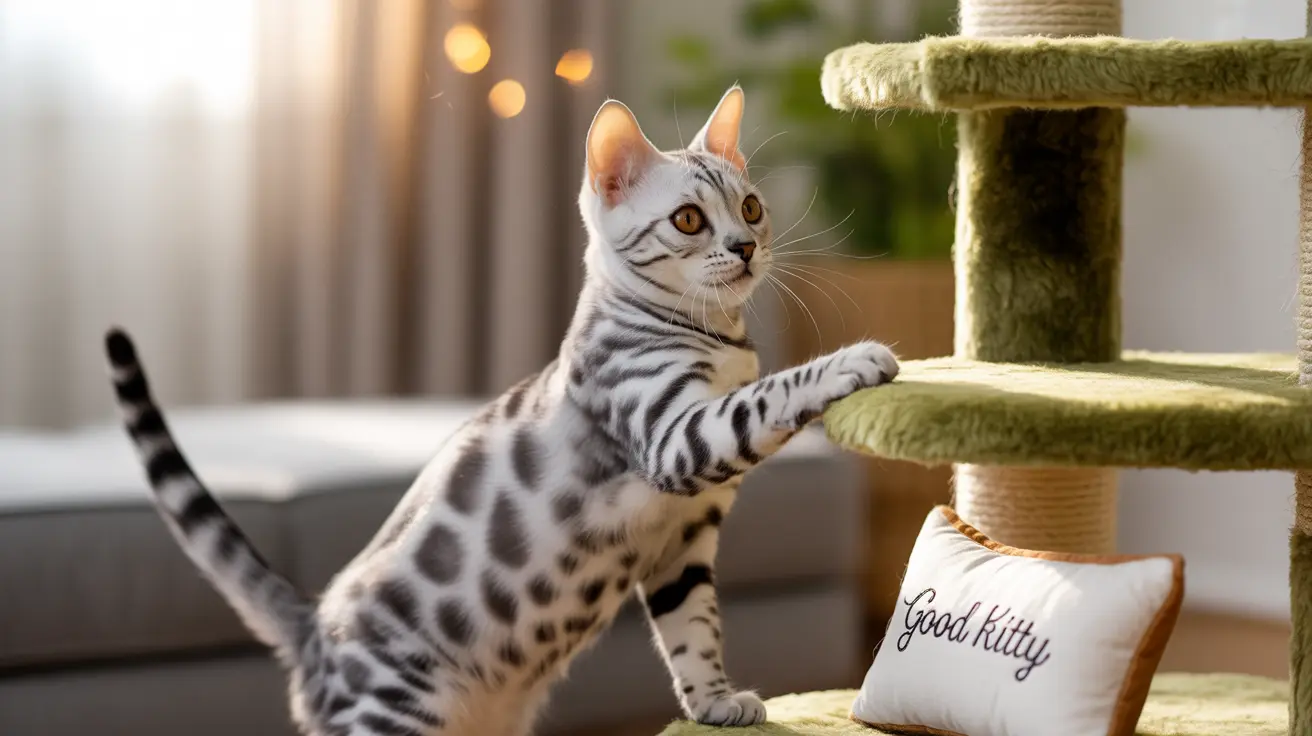Understanding Cat Territory and Scent Marking
Cats are highly territorial creatures with an exceptionally developed sense of smell. When encountering a used cat tree, your feline will immediately detect the previous owner's scent markings, which can trigger various responses. Some cats may feel threatened by these unfamiliar scents, while others might be more accepting, especially if they're spayed or neutered.
The age of the scent markings plays a significant role in acceptance. The longer a cat tree has been unused, the more likely the previous cat's scent has dissipated, potentially making it more appealing to your pet.
Health and Safety Considerations
Before introducing a used cat tree to your home, careful inspection and cleaning are essential. Used cat furniture can harbor various health risks, including:
- Fleas and mites
- Fungal spores
- Bacteria and viruses
- Allergens from previous pets
The structural integrity of the tree is equally important. Check for:
- Loose joints or connections
- Frayed ropes or scratching posts
- Unstable platforms or perches
- Worn or damaged covering materials
Preparing a Used Cat Tree for Your Pet
Deep Cleaning Protocol
To maximize the chances of your cat accepting the used tree, follow these preparation steps:
- Thoroughly vacuum all surfaces
- Use pet-safe disinfectants on all components
- Steam clean fabric surfaces when possible
- Allow complete drying in fresh air
- Consider replacing heavily worn components
Scent Management
Help your cat claim the tree as their own by:
- Rubbing their favorite blanket on the surfaces
- Using catnip or cat-attractive herbs
- Applying synthetic feline pheromones
- Placing familiar toys on different levels
Strategic Placement and Introduction
Location can significantly influence whether your cat will use a used cat tree. Consider placing it:
- Near windows for bird watching
- In sunny spots for comfortable napping
- Away from high-traffic areas
- In spaces where your cat already likes to spend time
Cost vs. Value Analysis
While used cat trees can offer significant savings, consider these financial factors:
- Initial purchase price versus new
- Cleaning and renovation costs
- Potential veterinary expenses if health issues arise
- Time investment in preparation
- Replacement costs if the tree proves unsuitable
Frequently Asked Questions
Will my cat use a used cat tree that still smells like another cat?
It depends on your cat's personality and territorial nature. Some cats may avoid the tree initially, while others might not be bothered. Thorough cleaning and allowing time for previous scents to fade can increase acceptance chances.
How can I safely clean and prepare a second-hand cat tree to avoid health risks?
Use pet-safe disinfectants, vacuum thoroughly, and consider steam cleaning fabric surfaces. Allow the tree to dry completely in a well-ventilated area. Replace any heavily soiled or damaged components.
What should I check to ensure a used cat tree is structurally safe for my cat?
Inspect all joints, connections, and weight-bearing elements. Test platform stability, check rope attachments, and ensure there are no loose or broken parts that could cause injury.
How can I encourage my cat to accept and use a previously owned cat tree?
Use positive reinforcement with treats, catnip, and familiar toys. Place the tree in a preferred location and allow your cat to investigate at their own pace. Consider using feline pheromone sprays to increase appeal.
Are used cat trees worth buying compared to new ones considering cost and safety?
Used cat trees can be worth buying if they're in good condition, properly cleaned, and significantly less expensive than new ones. However, if extensive repairs or cleaning are needed, the savings may not justify the potential risks and extra effort.
Conclusion
While cats can certainly use a used cat tree, success depends on proper preparation, your cat's personality, and the condition of the tree itself. By following proper cleaning protocols, ensuring structural integrity, and patiently introducing the tree to your cat, you can increase the likelihood of acceptance while maintaining safety and comfort for your feline friend.






